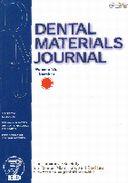Volume 28, Issue 1
Displaying 1-15 of 15 articles from this issue
- |<
- <
- 1
- >
- >|
Feature Reviews
-
2009 Volume 28 Issue 1 Pages 1-10
Published: 2009
Released on J-STAGE: July 10, 2009
Download PDF (1073K) -
2009 Volume 28 Issue 1 Pages 11-19
Published: 2009
Released on J-STAGE: July 10, 2009
Download PDF (1160K) -
2009 Volume 28 Issue 1 Pages 20-36
Published: 2009
Released on J-STAGE: July 10, 2009
Download PDF (5442K) -
2009 Volume 28 Issue 1 Pages 37-43
Published: 2009
Released on J-STAGE: July 10, 2009
Download PDF (2613K) -
2009 Volume 28 Issue 1 Pages 44-56
Published: 2009
Released on J-STAGE: July 10, 2009
Download PDF (1664K) -
2009 Volume 28 Issue 1 Pages 57-61
Published: 2009
Released on J-STAGE: July 10, 2009
Download PDF (436K)
Original Papers
-
2009 Volume 28 Issue 1 Pages 62-67
Published: 2009
Released on J-STAGE: July 10, 2009
Download PDF (582K) -
2009 Volume 28 Issue 1 Pages 68-74
Published: 2009
Released on J-STAGE: July 10, 2009
Download PDF (1624K) -
2009 Volume 28 Issue 1 Pages 75-81
Published: 2009
Released on J-STAGE: July 10, 2009
Download PDF (1035K) -
2009 Volume 28 Issue 1 Pages 82-88
Published: 2009
Released on J-STAGE: July 10, 2009
Download PDF (2482K) -
2009 Volume 28 Issue 1 Pages 89-95
Published: 2009
Released on J-STAGE: July 10, 2009
Download PDF (2259K)
Technical Reports
-
2009 Volume 28 Issue 1 Pages 96-101
Published: 2009
Released on J-STAGE: July 10, 2009
Download PDF (450K) -
2009 Volume 28 Issue 1 Pages 102-112
Published: 2009
Released on J-STAGE: July 10, 2009
Download PDF (3267K) -
2009 Volume 28 Issue 1 Pages 113-120
Published: 2009
Released on J-STAGE: July 10, 2009
Download PDF (484K) -
2009 Volume 28 Issue 1 Pages 121-127
Published: 2009
Released on J-STAGE: July 10, 2009
Download PDF (1912K)
- |<
- <
- 1
- >
- >|
